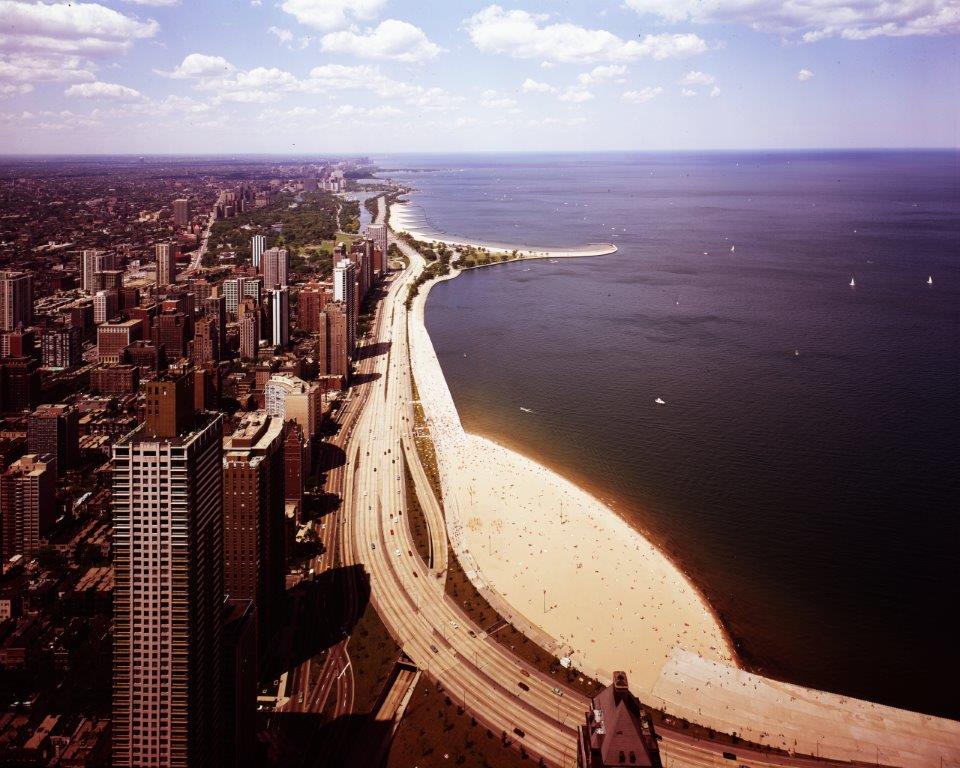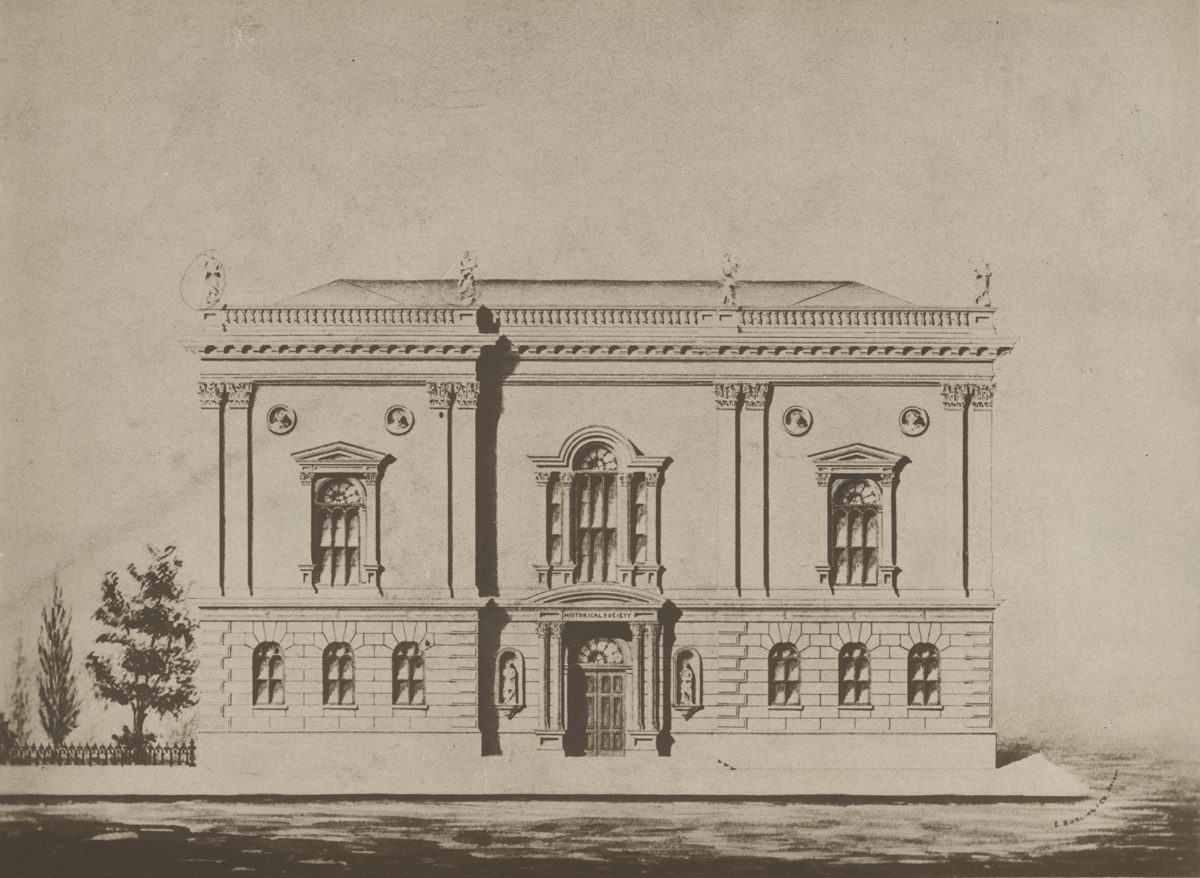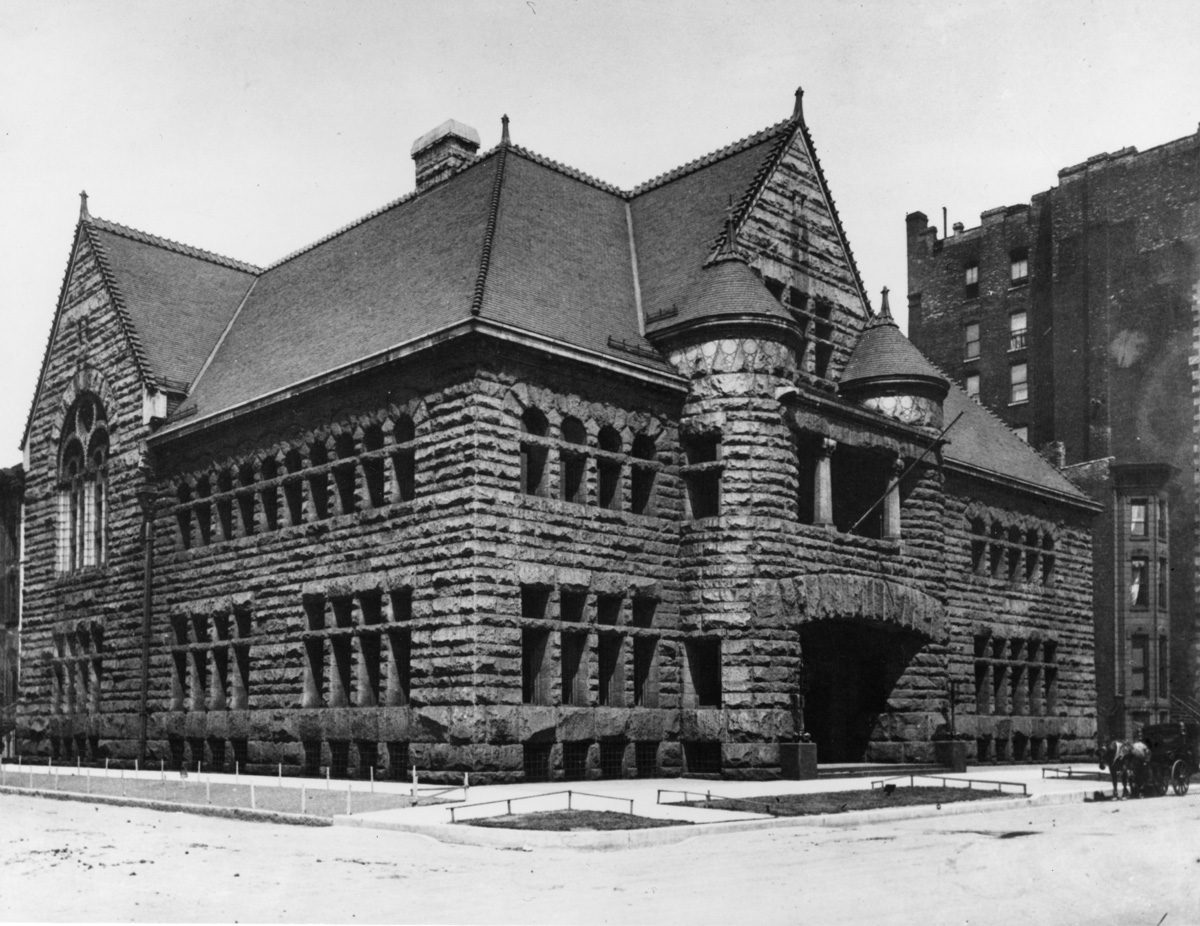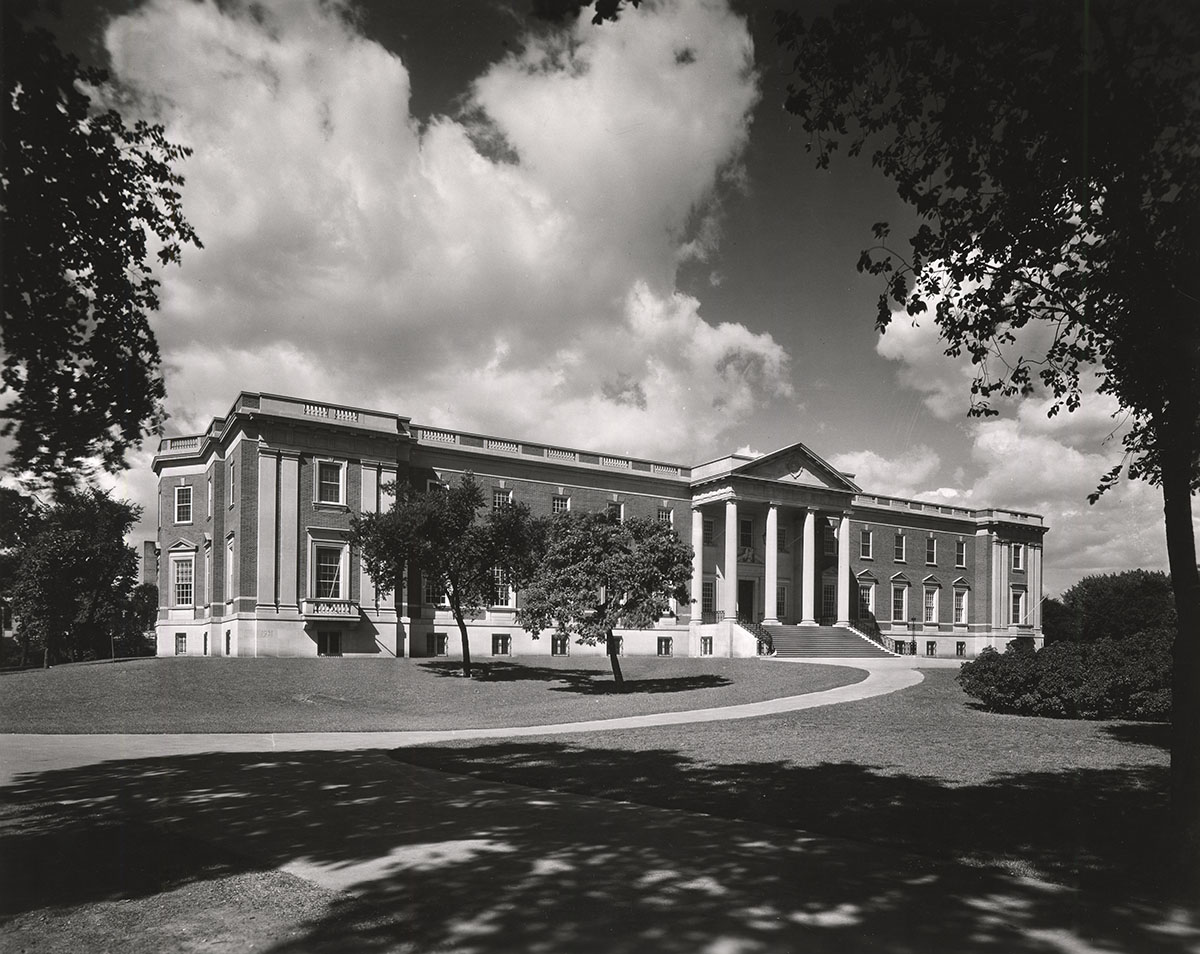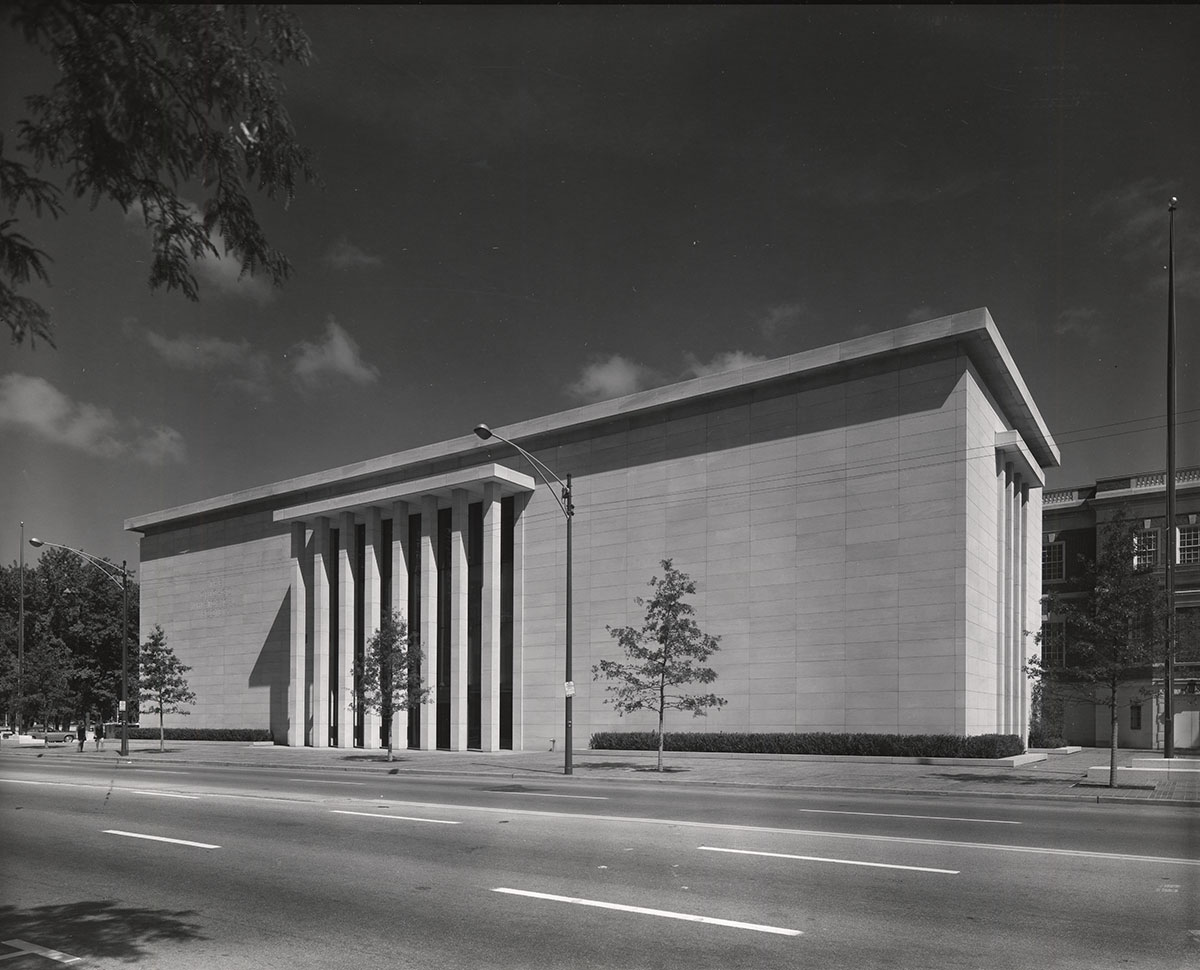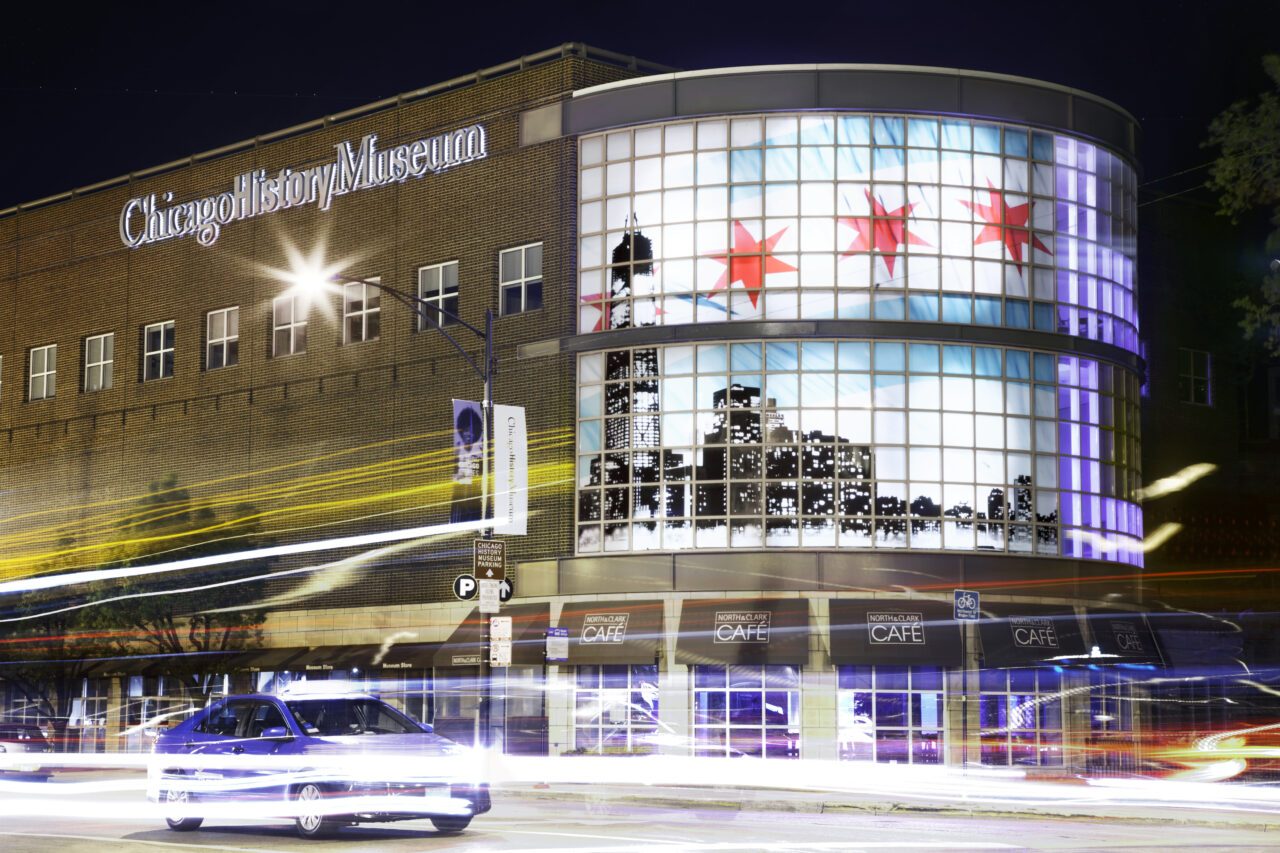Museum History
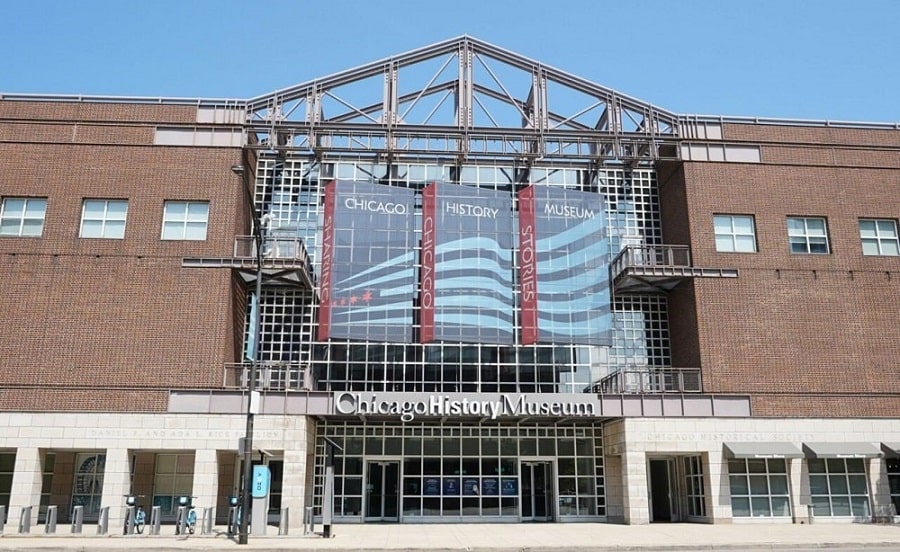
Chicago’s Oldest Cultural Institution
The Chicago History Museum is situated on ancestral homelands of the Potawatomi people, who cared for the land until forced out by non-Native settlers.
Founded in 1856 and incorporated in 1857 by an act of the state legislature, the Chicago Historical Society and its collection grew and opened its first building at the corner of Dearborn and Ontario Streets. That building and most of the collection, however, burned during the Great Chicago Fire of 1871. After three years and a second fire that destroyed most of the remaining collection, the Society renewed its operations. Occupying temporary buildings on the same site until 1896, the organization built a massive stone edifice designed by Henry Ives Cobb, which housed the Gilpin Library and exhibition spaces.
In 1920, the Society purchased thousands of manuscripts and hundreds of paintings and historical artifacts from the estate of Charles F. Gunther, including the bed on which Abraham Lincoln died and George Washington’s compass. In the late 1920s, the trustees began planning a new $1 million museum to house its growing collection and to mark the city’s centennial. Designed by Graham, Anderson, Probst & White, the Georgian colonial building opened in 1932 in Lincoln Park at Clark Street at North Avenue. That building, with various additions, renovations, and improvements, has served as the organization’s home ever since. In 1972, the Society unveiled a modern limestone addition by Alfred Shaw and Associates.
In 1988, Holabird and Root “wrapped” the limestone addition in a red brick modern adaptation of the 1932 building and added underground storage and new gallery spaces. In February 2006, the Chicago Historical Society announced its new name: the Chicago History Museum. Later that year, the Museum celebrated a grand reopening, unveiling a dramatic new lobby and redesigned exhibition spaces. Signature exhibitions such as Chicago: Crossroads of America and Sensing Chicago debuted, while an old favorite, Imagining Chicago: The Dioramas, was restored and updated.
A major museum and research center for Chicago and US history, the Museum strives to be a destination for learning, inspiration, and civic engagement. Through dynamic exhibitions, tours, publications, special events, and programming, the Museum connects people to Chicago’s history and to each other. Thousands of school groups from Chicago and the surrounding area visit annually. The Abakanowicz Research Center serves thousands each year, from schoolchildren working on Chicago Metro History Day projects to PhD students writing dissertations to filmmakers researching documentaries.
Land Acknowledgment
The Chicago History Museum is situated on ancestral homelands of the Potawatomi people, who cared for the land until forced out by non-Native settlers. The Ojibwe, Odawa, Peoria, Kaskaskia, Miami, Mascouten, Sac and Fox, Kickapoo, Ho-Chunk, Menomonee, and tribes whose names have been lost as a result of genocide also lived, gathered, and traded in this region. Today, Chicago is home to the largest urban Indigenous population in the Midwest, and they continue to honor this land and its waterways, practice traditions, and celebrate their heritage.
The Chicago History Museum acknowledges the contributions of Indigenous communities and commits to an ongoing collaboration to share a complex and inclusive history.
